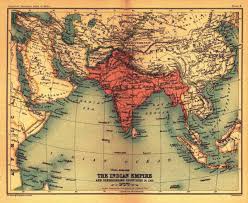When Dubai Almost Became Part of India
The Forgotten Story of the Gulf’s Ties to British India
Published Date: July 3, 2025
As we all know, Dubai is now a global hub for travel and tourism. A part of its history, however, is closely linked with India. In the early 20th century, several Gulf states, including Dubai, were under British India, effectively functioning as protectorates.
Forgotten Relations between the Middle East and India
Although forgotten today, in the early 20th century—up to 1947—nearly a third of the Arabian Peninsula was ruled as part of the British Indian Empire. This part of history is neither widely discussed in India nor in the Middle East, but the fact remains that they were closely linked to India.
The laundrymen were called "Dhobi," and watchmen were known as "Chowkidar." On Sundays, curry lunches were a popular Anglo-Indian ritual.
The Sultan of Oman, educated in Rajasthan, was more fluent in Urdu than in Arabic, while soldiers in modern Yemen marched in Hyderabadi-styled uniforms. The standard list of India's semi-independent princely states even started alphabetically with Abu Dhabi. Lord Curzon once suggested that Oman should be treated "as much a Native State of the Indian Empire."
Gulf Countries Administered from Delhi
From Aden to Kuwait—including Dubai, Abu Dhabi, Oman, and Yemen—the British Gulf protectorates were administered from Delhi. The officers were selected from the Indian Political Service and were answerable to the Viceroy of India. The currency used was the Indian rupee, and the language of administration was Urdu.
Under the Interpretation Act of 1889, these protectorates were legally considered part of India.
Indian Passports Issued for the Gulf Region
The Indian passport issued during the British Raj included the Gulf region, with the first passport issued in 1862. This passport listed the countries where it was valid, including the Gulf states.
Indian passports were issued as far as Aden, in modern-day Yemen, which functioned as India’s westernmost port and was administered as part of the Bombay Province.
Secret Maps

Much of the British Raj was hidden from public view. Official maps never showed the full extent of the British Indian Empire. To avoid the ire of Istanbul, Arab states bordering the Ottoman Empire were deliberately left off maps. This can be compared to "a jealous sheikh hiding his favourite wife."
Oman, like Nepal in the east, was not officially part of the Indian Empire, but it was governed as an informal protectorate by the Viceroy of India and included in the list of Indian princely states, which were under indirect British rule.
Gulf States’ Separation from British India
On 1 April 1937, Aden was separated from India. A telegram from King George VI was read aloud:
"Aden has been an integral part of British Indian administration for nearly 100 years. That political association with my Indian Empire will now be broken, and Aden will take its place in my Colonial Empire."
However, the other parts of the Gulf remained under the purview of the Government of India for another decade.
The Gulf states, from Dubai to Kuwait, were finally separated from India on 1 April 1947, just months before the British Raj itself was divided into India and Pakistan, granting independence to India.
Conclusion
As revealed by these facts, the Gulf states were once an integral part of British India, and their history is closely linked to India’s colonial past. It is now evident that the British Indian Empire was divided into five parts of today’s world: India, Pakistan, Bangladesh, Myanmar, and the Gulf region.
To stay updated and for reading more articles, check out my Articles page. Also read Iran vs Israel for latest Middle East conflicts. For more historical and political insights, visit the Political Report Home Page.
Credits and Sources
- Primary historical references on British India’s administration of the Gulf states.
- Articles from BBC News and The Hindu.
- Shattered Lands: Five Partitions and the Making of Modern Asia, a book by Sam Dalrymple.
- Research papers on the colonial history of the Middle East and India.
- Maps and documents from the British Library archives.
Frequently Asked Questions
Yes, Dubai and other Gulf states such as Abu Dhabi and Oman were under British India’s control as protectorates until 1947.
Most Gulf protectorates, including Dubai, were separated from India on April 1, 1947, just before India's independence.
The Gulf was administered from Delhi by British India's Political Service. Indian currency and Urdu language were used for governance.
Yes, during the British Raj, Indian passports covered Gulf countries like Aden, Dubai, and Oman for travel purposes.
This history is often overlooked because British maps deliberately hid the Gulf’s ties to India to avoid diplomatic friction with the Ottoman Empire.